The Winning Sit and Go Battleplan
A portion of this article was published in issue #42 of WPT Poker Magazine.
Hands down, the Sit and Go has been the most significant innovation to come out of online poker. A Sit and Go is the only way you can experience every phase of a poker tournament in under an hour at any buy-in and never wait for a starting time.
Aside from the unadorned vanilla variety we now have Double Ups, Triple Ups, Heads-up, 6-Player, Turbo, Hyper Turbo, Bounty, and the much-loathed Spin & Go and Blast.
As I finished typing that sentence a poker site probably tried to patent a new variation. I can see it now: The World’s First Hyper Turbo Mega Ultra Speed Double Triple Win 100% FTWBBQ Showdown and Go!
Table of Contents
- Why you should care about Sit and Go’s
- Your Sit and Go basic training
- Best Sit and Go Poker Site List
- What is a Sit and Go?
- Sit and Go Tournament Structure
- Why I won’t be focusing on Turbo and Hyper Turbo variations
- I will be focusing on standard-blind Sit and Go’s
- Example Sit and Go hands
- During the early rounds
- Early round Sit and Go strategy in a nutshell
- Middle Rounds: Shifting gears for the blinds
- 1. Don’t completely overhaul your sound strategy
- 2. At the same time, make the conscious effort to become at least slightly more aggressive.
- 3. Follow up your pre-flop raises with betting on the flop, even if you didn’t connect
- 4. Pre-flop calling is a weak play in the middle rounds and beyond
- 5. If you have a lot of chips you don’t need to become the table bully
- 6. Watch for players that you can steal blinds from
- 7. If you’re short-stacked you should be looking for your best opportunity to go all-in
- Calculated aggression wins Sit and Go tournaments
- The Home Stretch: heads-up play
- Appendices: Sit and Go format variations
- Debriefing your Sit and Go strategy mission
Why you should care about Sit and Go’s
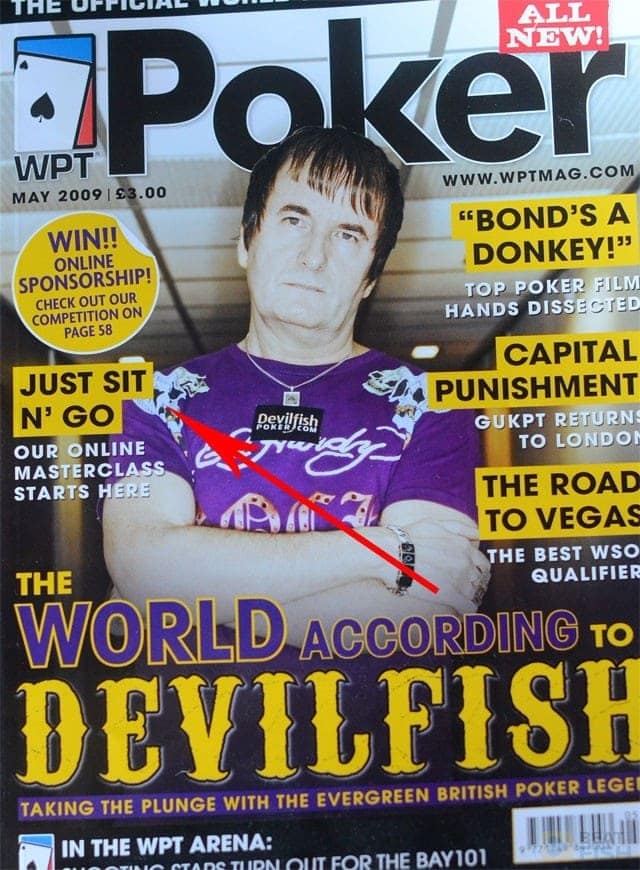
There’s a reason Sit and Go’s have remained on such a hype train for so long. Besides being incredibly entertaining Sit and Go’s can be one the most profitable forms of online poker.
Players with an ironclad Sit and Go-specific strategy – even without a pure poker skill advantage over the rest of the table – can regularly finish in the money and make an absolute killing.
Here’s the best part: Sit and Go’s are so plentiful and can be so profitable that many online pros make their living playing them and nothing else.
Even if you aren’t a pro there’s a never-ending supply of Sit and Go winnings ripe for the taking to supplement your cash game or multi-table tournament regimen.
Your Sit and Go basic training
So, soldier, listen up!
I will take you on a tour of winning a Sit and Go from the Register Now button to the majestic summit reserved for champions who can do their jobs!
You will learn essential Sit and Go strategy! You will play a better Sit and Go game! You will take what’s rightfully yours from the donk in seat 4! At-ten-tion!
Best Sit and Go Poker Site List
- Ignition Poker is the #1 most-trafficked USA poker site. Because of their traffic you’ll find Sit and Go’s with low wait-times up to the $50-100 level. Bitcoin payouts also get processed within 15 minutes.
- ACR Poker is #2 in USA traffic. Besides the traffic allowing for Sit and Go’s to constantly fill up, they have one of the best cashiers in the USA market.
- BetOnline is #3 in USA traffic. Besides some unique software features that make Sit and Go’s more fun, they now allow you to play every tournament on mobile.
What is a Sit and Go?
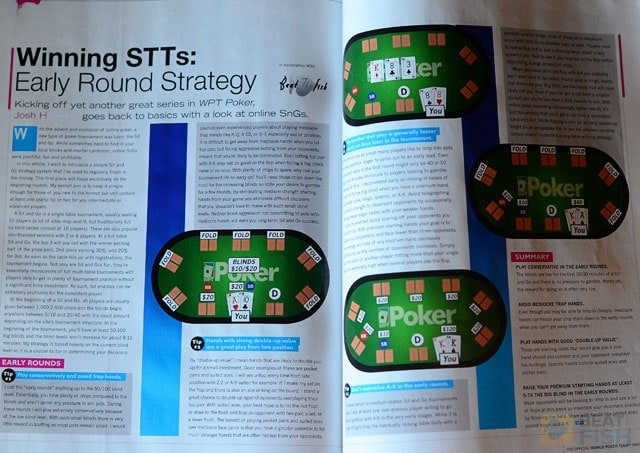
Before we dive into strategy it’s worth defining what a Sit and Go is exactly.
- A Sit and Go an on-demand poker tournament that begins as soon as the seats are filled.
- It’s usually a single table of 2, 6, or 9 players, although more popular poker sites can fill multi-table Sit and Go’s.
- Every player starts off with the same amount of starting chips.
- Aside from Turbo variations blinds are increased every 8-10 minutes.
- Prizes are given to the top 2 (6-player events) or top 3 (9-player events).
Think of a Sit and Go just like a miniature standard tournament.
Aside from special situations like satellites at The Rio during the WSOP these only take place online as there simply wouldn’t be enough tables and dealers devoted to waiting around for small-stakes one-table tournaments.
Sit and Go Tournament Structure
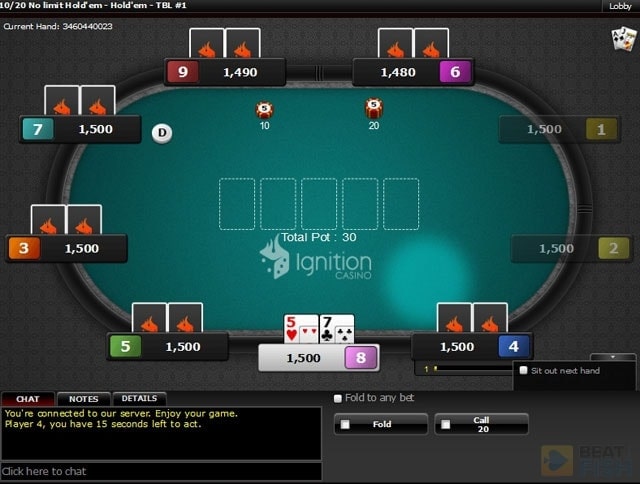
At the beginning of a Sit and Go, all players are usually given between 1,000-2,000 chips.
The blinds begin anywhere between 5/10 and 20/40 with the exact amount depending on the site’s tournament structure.
What this means is that at the beginning of the tournament you’ll have at least 50-100 big blinds and the blind levels won’t increase for about 8-10 minutes.
What the prize structure is like
9-player Sit and Go’s
Let’s use a $10 tournament as an example. Keep in mind that you’ll usually be paying 10% extra as a tournament fee, making the total buy-in $11.
The total prize pool would be $90 with 9 players participating. Some sites have 10-player tables, which would make the prize pool $100.
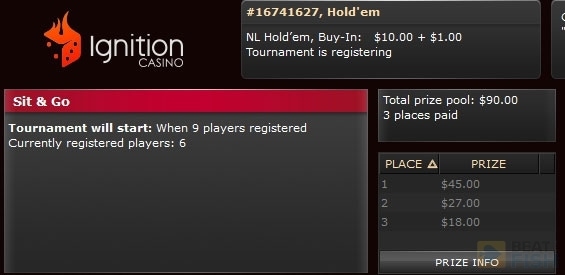
Traditionally, it has broken down like this:
- 1st place: $45 (50% of the prize pool)
- 2nd place: $27 (30% of the prize pool)
- 3rd place: $18 (20% of the prize pool)
6-player Sit and Go’s
For a $10 Sit and Go there would be a $60 prize pool. There seems to be an even split on the prize structure used these days for 6 players. In the old days it used to always be:
- 1st place: $63 (70% of the prize pool)
- 2nd place: $27 (30% of the prize pool)
However, many sites of late like Ignition Poker and PokerStars now give a little more to 2nd place:
- 1st place: $39 (65% of the prize pool)
- 2nd place: $21 (35% of the prize pool)
It seems to be about a 50/50 split online right now.
Why I won’t be focusing on Turbo and Hyper Turbo variations
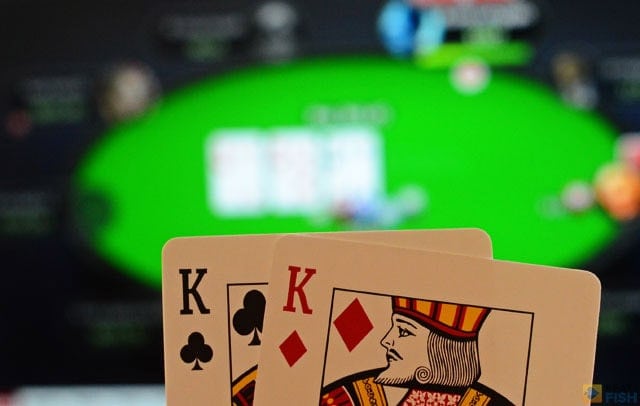
Turbo and Hyper-turbo variations set blind levels as low as 1 minute, which I don’t play often as they greatly erode the gap between luck and skill. Still, they’re immensely popular these days.
With the blinds rising to 10% or more of your starting stack literally in a matter of minutes players are forced to make almost every future decision with the blinds in mind.
Things quickly become all-in-or-fold
It results in mostly pre-flop all-in-or-fold situations, which leads to coin-flip situations and little post-flop strategic play. Turbo events can be exhilarating in short bursts or perfect if you have a very small time constraint, but they allow for extreme variation.
Most of your Sit and Go entries are going to come down to watching 5 cards fall and hoping for the best, which is extremely unpredictable even if you’re a pre-flop favorite. If that’s what you enjoy then have at it.
With turbo you won’t be able to control your own fate as much as standard Sit and Go’s and they’re much harder to consistently finish in the money because you’re subject to so much variance.
I will be focusing on standard-blind Sit and Go’s
Consistent profit is my goal with this Sit and Go strategy guide so I will be focusing exclusively on the standard 8-10 minute blind increases. As you’re reading assume that’s what type of event I’m talking about.
At some sites Hyper Sit and Go’s only increase the blinds at a 5-minutes clip. These concepts would mostly apply to these as well as there’s enough breathing room to allow for long-term strategy.
Example Sit and Go hands
Let’s start by taking a look at 8 example hands that illustrate the Sit and Go strategy concepts I will cover in this guide. Then, let’s break into (too much?) detail mapping out my specific battleplan for each tournament stage.
Early Rounds
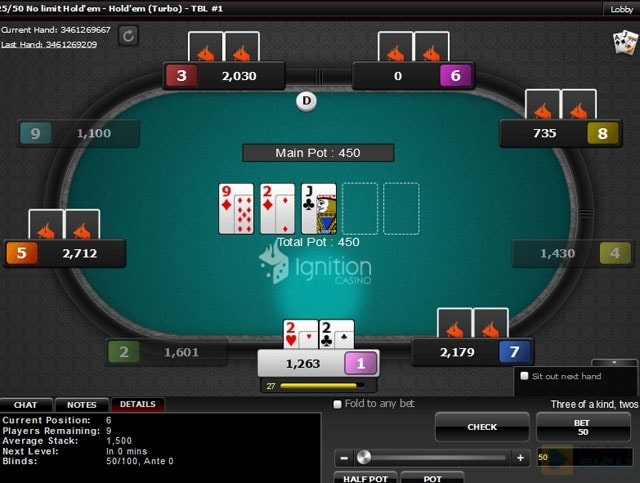
This hand illustrates exactly what I’m talking about when I refer to “double up” potential. I was able to play pocket 2-2 for the minimum (which is still very low compared to your stack in the early rounds) against 5 other players. When I hit my set I bet out and ended up all-in against a flush draw.
It’s a hand that few expect you to have and you’re almost always the favorite when you hit with it.
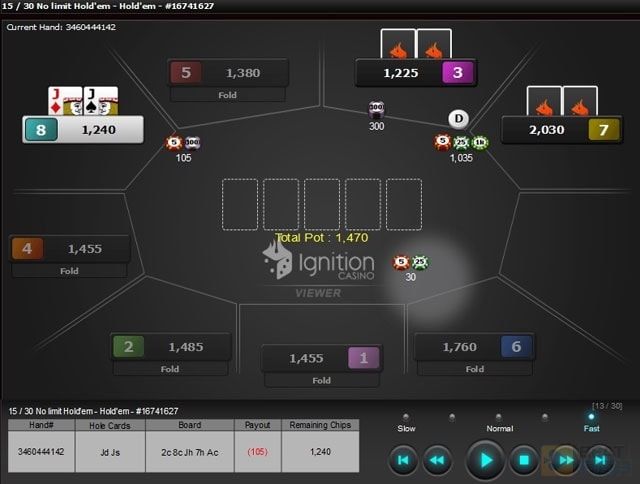
Here’s an example of knowing when to get out. I opened the pot from late position with pocket J-J, got re-raised by the button, and the small blind then goes over the top.
I felt like this was an easy fold, but many Sit and Go players call in this situation. It’s so early and you have plenty of blinds left.
Do you really think that both of them have smaller pocket pairs than you? That’s about the only situation in which you’re a clear favorite here.
The button ended up having pocket 10-10, but the small blind had pocket K-K.
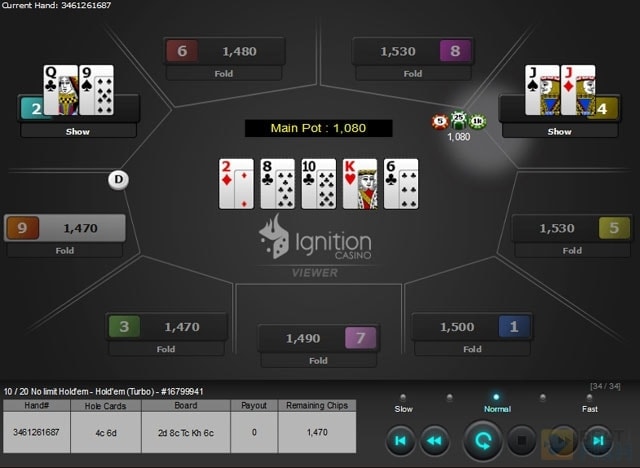
I wasn’t involved with this hand, but I think it clearly shows the unnecessary trouble that mediocre hands can get you into early in Sit and Go’s, especially out of position.
The small blind made a weak pre-flop call of player 4’s raise and then bluffed off over 500 chips. Just save yourself the trouble when you have no pressure to play hands.
Middle Rounds
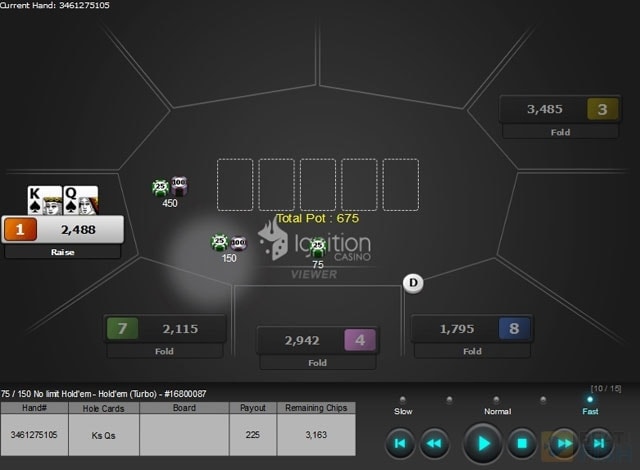
Here’s just a simple example of ramping up aggression with a blind semi-steal. I have a pretty strong hand for 5-handed play so I open with a 3x raise. The blinds fold and I’m happy to gain a free round of blinds.
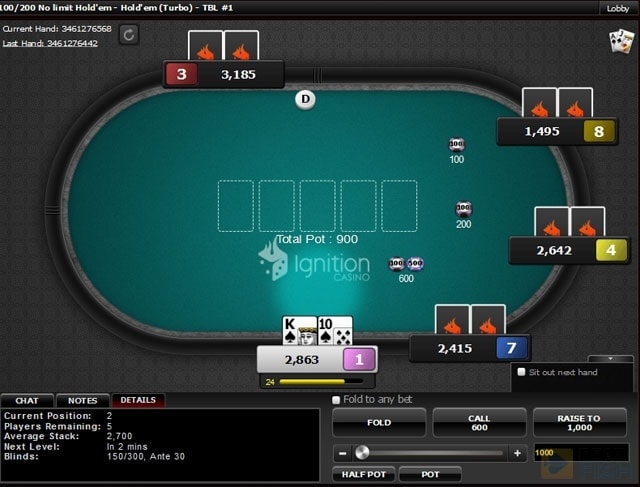
Here’s an example of how important it is to be the aggressor and how it changes your actions entirely. This was a hand I was planning to open with a raise, but player 7 did the same ahead of me.
It isn’t good enough for a call and certainly not for a re-raise so I fold it. Your opponents’ actions can easily and directly change a raising hand into a discarded one.
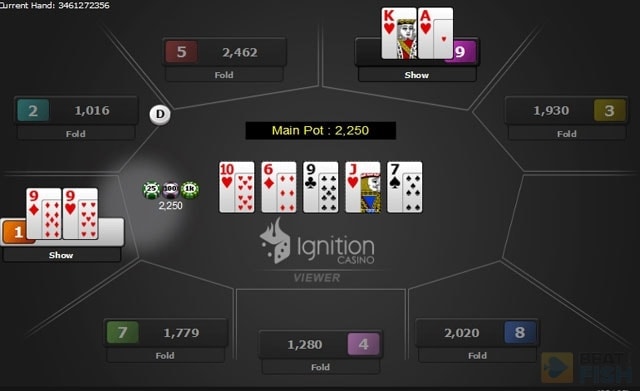
This hand shows quite a few learning concepts in one.
To start with, I opened the pot one off the button with a 3x raise. I manually typed it in and as it is smaller than the 3.5x Bet Pot button it looks more like a blind steal attempt.
Player 9 just calls and misplays his A-K. He should probably re-raise here since he will be out of position the whole hand and I may have laid down my 9-9.
I value bet the rest of the hand as he misses his draws.
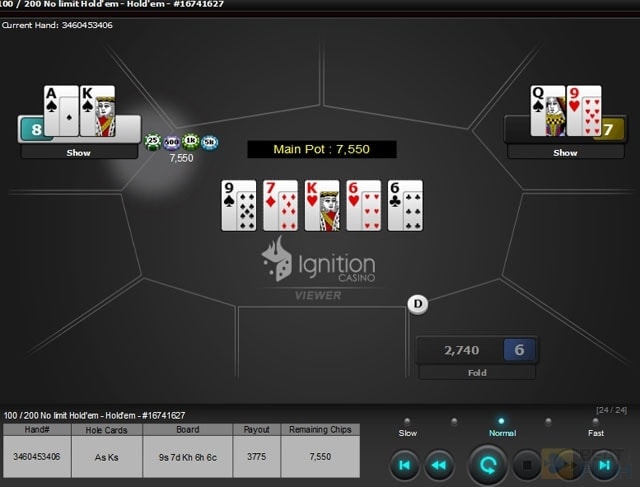
Here is a big pot that worked out perfectly because I was in the small blind. I manually raised to 600, which could have looked like a steal attempt to the big blind. I checked the flop trying to portray weakness that my blind steal didn’t work. He checked behind me, which sets up my next play perfectly.
In this situation I will often make a false “feeler/weak stab” that so many players make of just 400 chips. It looks like I’m just taking a stab with a missed hand because he showed weakness by checking the flop. He re-raises me to about 1,600 and I go over the top and put him all-in.
He makes the call, which is a surprisingly common move you’ll see by frustrated players even when they know they’re beaten and have enough chips to fold and fight another day.
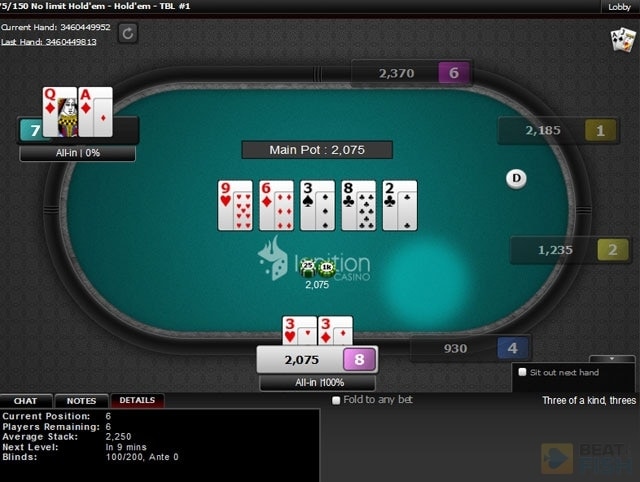
Here’s an example of simply making a move with what I feel is the best opportunity before the blinds eat me alive. I’m down to only 7 M’s (rounds of blinds) or so with about 1,000 chips so I just open the pot all-in in first position with a pocket pair.
You won’t always win as I did with a set, but it’s about a coin-flip against overcards, which is the most likely hand you’ll see call you in this scenario.
A coin-flip with a small pocket pair or a couple of face cards is about the best you can hope for while still being in control.
During the early rounds
1. Play conservatively and avoid trap hands
I call the “early rounds” anything up to the 50/100 blind level. Essentially, you have plenty of chips compared to the blinds and aren’t under any pressure to win pots. At this level, I will play extremely conservatively because of the low blind level.
With such small blinds there is very little reward in bluffing as most pots remain small. I would caution even experienced players about playing mediocre trap hands like K-Q, A-10, or Q-J at these stages, especially out of position.
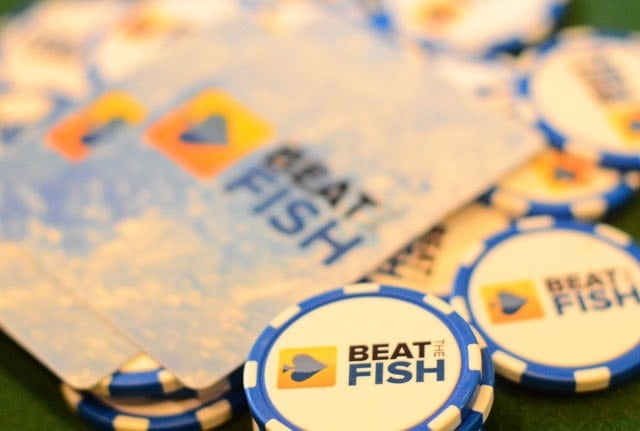
It is difficult to get away from mediocre hands when you hit top pair, but facing aggressive betting from your opponents means that you’re likely dominated.
Even hitting top pair with A-K may not be good on the flop when facing a big check-raise or reraise. With plenty of chips to spare early in the tournament, why risk your tournament life so early on?
You’ll need those chips down the road for the increasing blinds so stifle your desire to gamble for a few rounds.
By eliminating medium-strength starting hands from your game you eliminate difficult decisions that you shouldn’t have to make with such small blind levels. Neither blind aggression nor committing to pots with mediocre hands will earn you long-term Sit and Go success.
2. Hands with strong double-up value are a great play from late position
By “double-up value” I mean hands that are likely to double you up for a small investment. Good examples of these are pocket pairs and suited Aces. I will see a flop every time from late position with 2-2 or A-9 suited for only 40 chips or so.
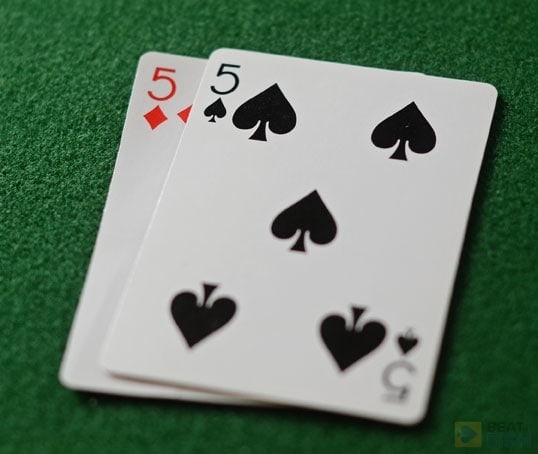
If I make my set or flush on the flop and there is also an Ace or King on the board I stand a great chance to double up against opponents overplaying their top pair.
With suited Aces your best hope is to hit the nut flush or draw to the flush and trap an opponent with two pair, a set, or a lower flush. The benefit of playing pocket pairs and suited Aces over mediocre face cards is that you have a greater potential to hit much stronger hands that are often hidden from your opponents.
3. Remember that play is generally looser early on than later in the tournament
As the blinds are so small many players like to limp into pots from any position, eager to jump out to an early lead.
Even a pot-sized raise in the first round might only be 40 or 50 chips, which looks minuscule to players looking to gamble. Because of this, I recommend mixing in raises of at least 5-7x the big blind when you have a premium hand like pocket Aces, Kings, Queens, or A-K early on in a Sit and Go.
Avoid telegraphing your hand strength to observant opponents by occasionally making these larger raises with your lesser hands.
If you’re worried about scaring off your opponents you shouldn’t be. With premium starting hands your goal is to isolate the competition and face less than 3 opponents. The average win rate of any Hold’em hand decreases significantly as the number of opponents increases.
Simply put, the odds of another player hitting more than your single pair are extremely high when several players see the flop.
Check out our Texas Hold’em hand strength page to see the average winning percentages of every hand combination in relation to the number of players in the pot. The plummeting numbers for multiple opponents are enough to scare you into raising your premium hands.
4. Don’t overvalue A-K in the early rounds
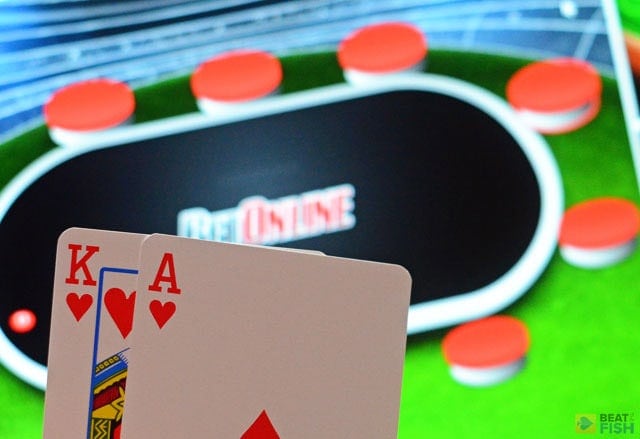
This is a chronic issue I’ve seen for years from small-stakes Sit and Go players and it’s such a poor play unless you like flipping a coin for your tournament life when you don’t have to yet.
In most small-to-medium stakes Sit and Go tournaments you’ll see at least one overanxious player willing to go all-in preflop with A-K in the very early stages.
While it’s one thing to trap the habitually raising table bully with a possible smaller kicker most of these all-in situations occur with little to no possible logic or read. Players need to realize that A-K is just a drawing hand, albeit a very powerful one. Wait to see if you improve on the flop before committing your entire Sit and Go life.
You don’t even want to be called so don’t put yourself at risk
When you move all-in preflop with A-K you probably don’t even want to be called. Pocket Aces or Kings, hands that dominate your Big Slick, are the hands that will most likely call you. Even if you can get a call from a smaller pocket pair (yes, even deuces) you’re less than a 50% favorite to win.
With online poker becoming increasingly tighter overall, it’s just too unlikely that you’ll get a call from a dominated hand with A-K. While flipping a coin for an early double-up might be an acceptable risk to you the inherent variance simply doesn’t make this a long-term winning strategy.
Early round Sit and Go strategy in a nutshell
To summarize, here are several steps to succeeding in the early rounds using this simple Sit and Go strategy:
- Play conservatively in the early rounds.
The blinds are low for the first 20-30 minutes of a Sit and Go and there is no pressure to gamble. Worse yet, the reward for doing so is often very low, but you risk your entire buy-in if you get in too deep with a hand you shouldn’t have played in the first place.
- Avoid mediocre trap hands.
Even though you may be able to limp in cheaply mediocre hands can knock your chip stack down in the early rounds when you can’t get away from them.
- Play hands with good “double-up value”.
This means starting cards that would give you a lock hand should you connect and your opponent overplays his holdings. Specific hands include suited Aces and pocket pairs.
- Raise your premium starting hands to at least 5-7x the big blind in the early rounds.
Weak opponents will be looking to limp in and see a lot of flops at this point so maintain your dominant position by thinning the field.
- Rarely risk your entire stack preflop with A-K.
While it is an extremely prevalent play in smaller Sit and Go’s, players looking for consistent wins should avoid overvaluing this drawing hand. You’ll likely end up with a coin-flip situation for all your chips or, at worst, the likely callers will already have you dominated.
Act rarely, but carry a big stick when you do
While these tips won’t cover every situation you’ll face early in a Sit and Go they’re useful guidelines to get you past the early rounds of play. Again, the most important tip here is to restrict your play at the onset to premium cards and those that can win you a big pot.
Many impatient players are playing Sit and Go’s purely for entertainment and will gamble it up early and often. As a result, you can often find yourself close to the money simply by letting the fish filet themselves.
Middle Rounds: Shifting gears for the blinds

So far we’ve covered Sit and Go strategy during the early rounds of play when the blinds are still low and you have plenty of chips left.
Essentially, I recommend a very conservative strategy during the first 3 rounds while taking a few cheap flops with “double-up” hands. Unfortunately, your strategy must change as the blinds increase both to take advantage of your opponents’ weaknesses and to combat getting blinded out of the tournament.
Let’s discuss Sit and Go strategy for the middle rounds – the period between the start of 50/100 blinds and until 3 players are left battling for the money.
The following tips, barring excessive bad beats, should allow you to navigate through the middle rounds while still giving yourself a shot at winning once play gets to 3-handed.
1. Don’t completely overhaul your sound strategy
A common mistake that I see from Sit and Go beginners is panicking when the blinds reach the 50/100 level. Your strategy shouldn’t change too much simply because the cost of doing business has increased.
What’s your “M”?
If you began with 1,500 or 2,000 chips and have managed to stay about even you still have 15-20 big blinds left. In Dan Harrington’s language, your “M” is still at 10-13 because you can pay to see that many more rounds of blinds without playing a hand.
While you don’t want to let your stack get down to 3 or 4 M’s that’s still a lot of poker left to be played!
If your natural Sit and Go strategy is a patient one and you still have an M over 6-8 don’t let the blinds take you off of your game.
2. At the same time, make the conscious effort to become at least slightly more aggressive.
When the blinds increase the table naturally becomes tighter overall with more players fearful of risking too many chips on marginal hands. This is the time that you want to become more aggressive.
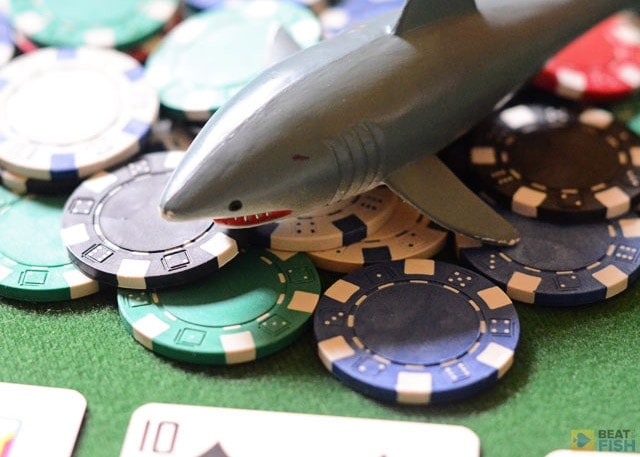
When you’re the first to open the pot, consider a raise to 2.5-3x the big blind. Making larger raises at this stage without a specific play in mind isn’t wise as you don’t need to risk an excessive amount of chips to make the same statement.
Cheap flops with mediocre hands are poison during the middle rounds
If you don’t feel that your hand is strong enough to raise with then consider why you’re playing the hand at all. Trying to see cheap flops with mediocre hands at this point will be a slow leak of your valuable chips.
Avoid weak Aces, baby pocket pairs, and trap hands like Q-J and K-10 unless you’re first to open the pot from late position and have a tight table image that could induce an easy fold from the blinds.
In the middle rounds of a Sit and Go you want to be taking advantage of your opponents tight play, seizing control pre-flop with your strong hands, and steal the blinds around once per round or two when in position. If you aren’t accomplishing any of those goals you should probably just stay out of the hand entirely.
3. Follow up your pre-flop raises with betting on the flop, even if you didn’t connect
Also known as a “continuation bet” a common play is to bet anywhere between ½ of the pot to the size of the pot following your pre-flop raise. This is done regardless of if you improve or not on the flop.
I only recommend a continuation bets in the middle Sit and Go rounds against 1 or 2 opponents if you haven’t improved. With more opponents it’s highly likely that at least one of them improved their hand enough to stay with you.
The virtues of the continuation bet
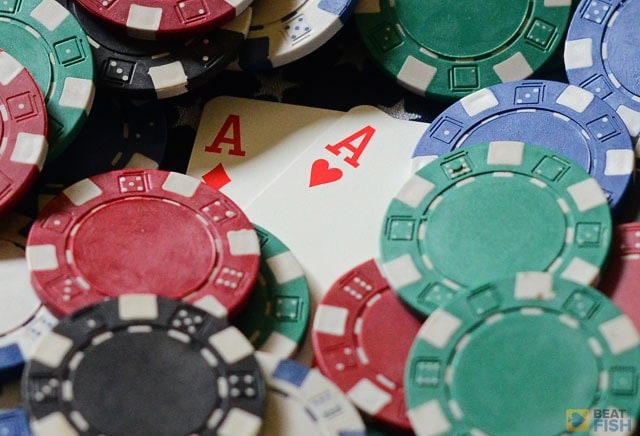
The continuation bet is a great play for Sit and Go’s and works especially well on tighter sites. Although this play makes you susceptible to check-raises when you’re in position it will induce your opponent to fold far more often.
Continuation bets usually work because it’s very difficult for good players to bet into or re-raise the pre-flop raiser without a very strong hand. Because you raised pre-flop you’re expected to have big face cards or a big pocket pair.
Your opponents obviously know that sometimes you’ll have hit the flop and other times you won’t have. The difficult part for other players is trying to decide when you haven’t hit if you’re almost always betting into them.
4. Pre-flop calling is a weak play in the middle rounds and beyond
Related to the above point, you don’t want to be doing a lot of pre-flop calling with large blind levels.
Even worse would be limping pre-flop out of position as you’ll be faced with a difficult decision if someone raises in later position: make a poor call and be out of position on the flop or fold and lose a valuable big blind.
Exceptions to this strategy would be when you’re trapping opponents with a big hand. Your goal here would be to limp from early or middle position, get raised, and then come back over the top for a re-raise.
5. If you have a lot of chips you don’t need to become the table bully
I see a lot of chip leaders make an early exit from Sit and Go tournaments by taking on the role of table bully.
Unlike multi-table tournaments where a chip leader might have 3 or 4 times as many chips as anyone else at the table it’s very rare to develop a very large chip lead in single-table tournaments because of the lack of players filling empty seats.
Even if you make an early double-up you’ll only be at about 3,000-4,000 chips at this level. Trying to dominate your opponents with frequent raises will tip them off to play patiently and reraise you when they have a premium hand. Folding to enough reraises will put you back down to the middle of the pack.
Some Sit and Go chip leaders will actually sit out during the middle rounds
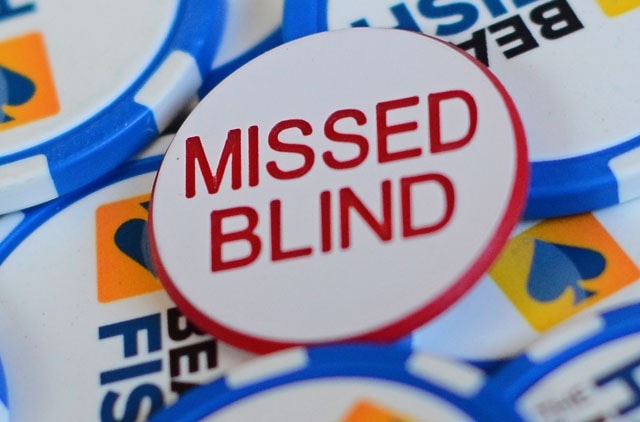
On the other extreme, it isn’t uncommon to see players who double up early literally sit out entirely until more players get knocked out! Seriously. I’m both simultaneously confused and pleased every time I see this.
It’s extremely poor strategy and shows a true lack of confidence if your own abilities. As the chip leader, I don’t recommend playing a lot of big pots unless you truly have a monster hand.
Try to slowly accumulate chips with blind steals and small raises. This should both increase your intimidating table image and set you up as the favorite when play becomes shorthanded.
6. Watch for players that you can steal blinds from
Perhaps one of the most essential skills to have in Sit and Go tournaments is knowing how and when to steal the blinds.
After all, if you could steal the blinds just once per round you would always stay afloat in the tournament.
It also helps you stay patient by allowing you to have fodder to pay the blinds while you wait for a powerful hand. To steal the blinds you should be the first one into pot making a standard 2.5-3x raise.
This should also only be tried from about position 6 (cutoff) or later (including the small blind) as there will be fewer players behind you that may have a good enough hand to play back. Of course, you should target tighter players who haven’t been defending their blinds and avoid aggressive players and maniacs in the blinds.
7. If you’re short-stacked you should be looking for your best opportunity to go all-in
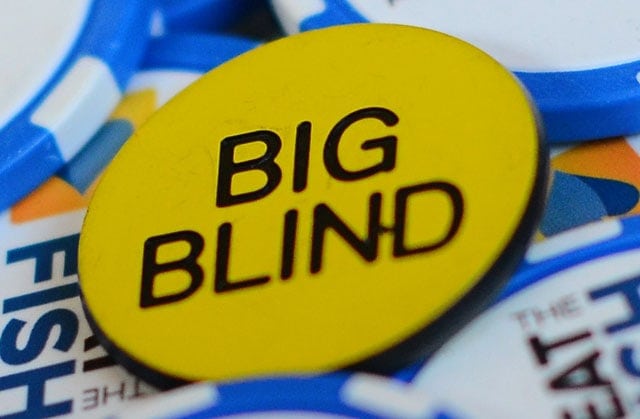
Any time you have less than 5 or 6 big blinds left (3-4 M) you should look for any above-average hand and stick everything in. Any pocket pair, Ace, or two face cards would qualify for this.
If you wait longer, there is a much greater chance that your bet will be called in multiple places, which of course decreases your expected win rate.
There’s also no point in making a non-all-in raise pre-flop with a short stack since you’ll be pot-committed anyway on the flop and you’ll induce more pre-flop callers.
Ideally, unless you’ve got a premium pocket pair or A-K you want to do this in medium-to-late position and be the first one to open the pot. With any other hand you just want to win a set of blinds.
Your goal with such a short stack is to either pick up the blinds uncontested or isolate to a heads-up situation where you still may have an advantage.
Calculated aggression wins Sit and Go tournaments
What I’ve tried to outline with the above tips for the medium rounds is a smart-aggressive approach Sit and Go strategy to the middle rounds. You should absolutely:
- Make an effort to raise more often preflop
- Make continuation bets on the flop
- Steal the blinds more often
- Not be concerned about running the table as the chip leader
Ideally, you will be able to play “small ball”, win several pots uncontested, and build your chip stack as a few more players get eliminated. The middle rounds are a time of chip management: you cannot wait indefinitely to get involved but at the same time you aren’t under huge pressure to gamble.
The Home Stretch: heads-up play
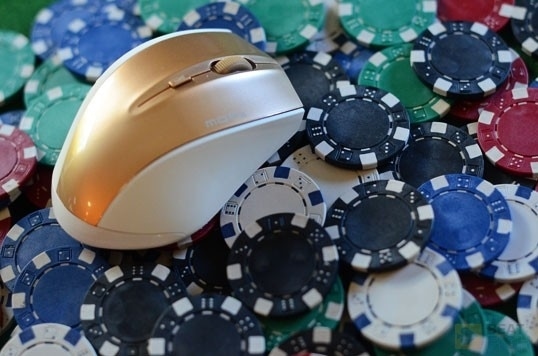
So, you’ve followed my advice, played a great tournament, and managed to make it down to the final two. Good job! What’s next? When you get down to heads-up play you’re either going to be acting or reacting on every single hand.
There won’t be a pot that you won’t be involved in and you’ll have to be prepared for fast action.
1. Your play should be completely wide open for heads-up
You opened up your play as the blinds increased, and you’ll need to open up your play even further when you’re playing heads-up. Most often, the action will take place before the flop.
The small blind gets to make the first move preflop so if you have any semblance of a hand you should raise and try to take the big blind. If your opponent is timid you should definitely run over him as often as possible.
The odds are that your opponent doesn’t have a hand, so it will be difficult for him to call without the cards to warrant it, especially being out of position on future betting rounds.
Of course, your opponent probably deduces the same logic about your hand so you can’t allow him to run over you, either. Don’t be afraid to return fire with an all-in re-raise. You can be armed with any pocket pair, any Ace or King-face-card, or even suited connectors.
You’ll be putting a lot of pressure on your opponent and you’ll often pick up the pot with this move. If you do get called there are few situations that will make you a prohibitive underdog.
2. Don’t be afraid of aggressive all-in moves
The most common heads-up all-in situations will be:
- Overcards (A-Q) vs. Undercards (J-10)
- A small pocket pair (5-5) vs. overcards (A-K)
- One overcard (K-10) vs. one undercard (A-8)

Do you know what?
Even the underdog is going to have a 30-50% chance of winning those hands. What that means is that you shouldn’t be afraid of being aggressive and making all-in plays when heads-up because you might get called by a better hand.
The only situations you’re very far behind on are an underpair vs. an overpair (10-10 vs. A-A) or undercards vs. an overpair (Q-J vs. K-K). Both of those require your opponent to have an overpair and the odds of that happening in the few hands you and your opponents will have the blinds to play are very low.
Your opponent is likely going to fold most hands uncontested pre-flop. Even if you make an all-in move and get called with a less-than-stellar hand you still have a decent chance to win.
The bottom line on aggressive heads-up play
Here’s the bottom line:
I would rather trade the risk of my opponent waking up with a premium pocket pair and busting me out for the chance to steal most of his chips while he folds and waits for a better chance to fight back.
A lot of your timid opponents think they have you beat by thinking, “Go ahead and keep raising me! When I finally get a hand worth playing and re-raise you for everything you’ll be sorry!”
The key they’re missing is that you’ve “stolen” a bunch of their chips in the meantime with the blinds so high. They’re likely the short stack, meaning you’ll still have another chance to fight back if the all-in fight doesn’t go your way.
Appendices: Sit and Go format variations
6-Max Sit and Go strategy
Although most of this guide applies to 6-handed Sit and Go’s as well, there are a few tweaks to consider given that only two players get paid and the bubble stage kicks in after three eliminations instead of six.
Adjustments to the middle stages
The most important adjustments happens during the middle stages when there are four or five players left. By this point the blinds have likely increased enough to make them a central focus of everyone at the table.
At 6-max Sit and Go’s you’ll also be playing the blinds 50% more often, making staying afloat via frequent blind steals essential.
Increased aggression over 9-player tourneys

Just like with cash games, 6-max Sit and Go’s require more aggression. Don’t be shy to make your moves from the button or cutoff.
Of course, be prepared to quickly let go your weak hands when your steal attempt goes south as you usually won’t be deep enough chip-wise to really take flops in three-bet pots with weak hands.
By playing this style during the mid-stages you have a better chance at reaching the bubble with a decent-sized stack. That stack will allow you to exert pressure on short stacks while not having to worry about risking your tournament life.
Smart aggression is the key to shorthanded Sit and Go strategy
To sum it up, be prepared to amp your aggression earlier in 6-max Sit and Go’s and you should significantly increase your overall return on your investment (ROI). Remember to be able to let go of your weak hands when other players play back at you and don’t enter unnecessary bluffing situations for a significant portion of your stack.
50/50 Sit and Go’s
While this type of Sit and Go’s has gone out of style somewhat the 50/50, in which half the table wins double the buy-in, certainly been quite popular for a while.
The most important thing you need to understand and keep in mind is that you aren’t playing to win.
While this sounds strange when talking about anything poker-related it’s simply true in 50/50’s. All you need to do is outlast the other three or five players. That means that chip accumulation is only important up to a certain point and the value of chips you keep in your stack raises tremendously.
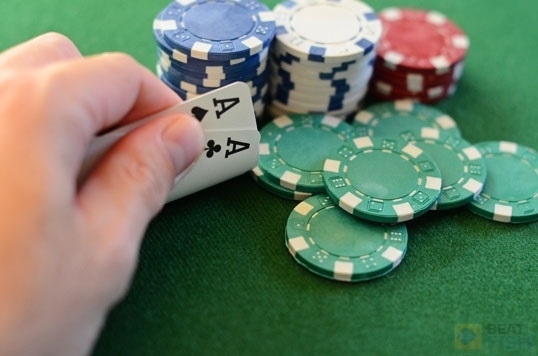
If you eliminate all five players from a 10-handed 50/50, you won’t receive a special reward. You will get exactly the same amount as the other four who did nothing. This isn’t to say that you shouldn’t play good poker and try to win each pot you’re involved in, but risking a lot on a close situation becomes a much bigger mistake.
The prevent defense
Once you’ve doubled up and a bit more you should engage in preservation mode and take as few risks as possible. Think of it like the prevent defense in football. Bend but don’t break. Steal the blinds and keep your stack hovering, but avoid big pots unless you are truly holding premium hands and it is unavoidable.
Sometimes it will even be correct to lay down a legit monster hand when facing aggression from someone who has you covered if there are two short stacks barely holding on. In this way 50/50’s are very similar to satellite tournaments.
Another thing you need to be aware of is that a huge ROI is unlikely in 50/50’s. Due to a flat payout structure and tournament fees the best 50/50 players only achieve a few % positive ROI.
Debriefing your Sit and Go strategy mission
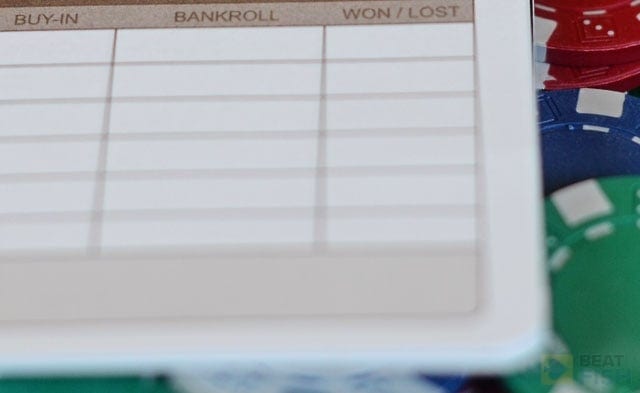
Sit and Go’s allow for fast action and good practice for multi-tournament play without the investment of hours of your time. Remember to start off playing a tight game as many opponents will play recklessly early on and you aren’t highly rewarded for taking chances on borderline calls early on.
As the blinds increase you should begin to open up your game by occasionally stealing blinds and raising with more hands from late position. If you make it to heads-up play be the aggressor as much as possible and don’t hesitate to go all-in often with pairs and at least one face card.
Start making the money in the majority of events
Sit and Go’s have been one of the most popular segments of online poker for years thanks to their fast tournament style. Many online players make a healthy profit from playing these games exclusively.
By following your mission outlined here and, most importantly, putting it into practice, you can reach the point where you are making money in 70-80% of your Sit and Go’s. That’s a very healthy supplement to your cash game or tournament wins.
Dismissed to the tables, soldiers!



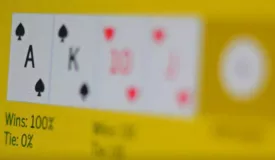





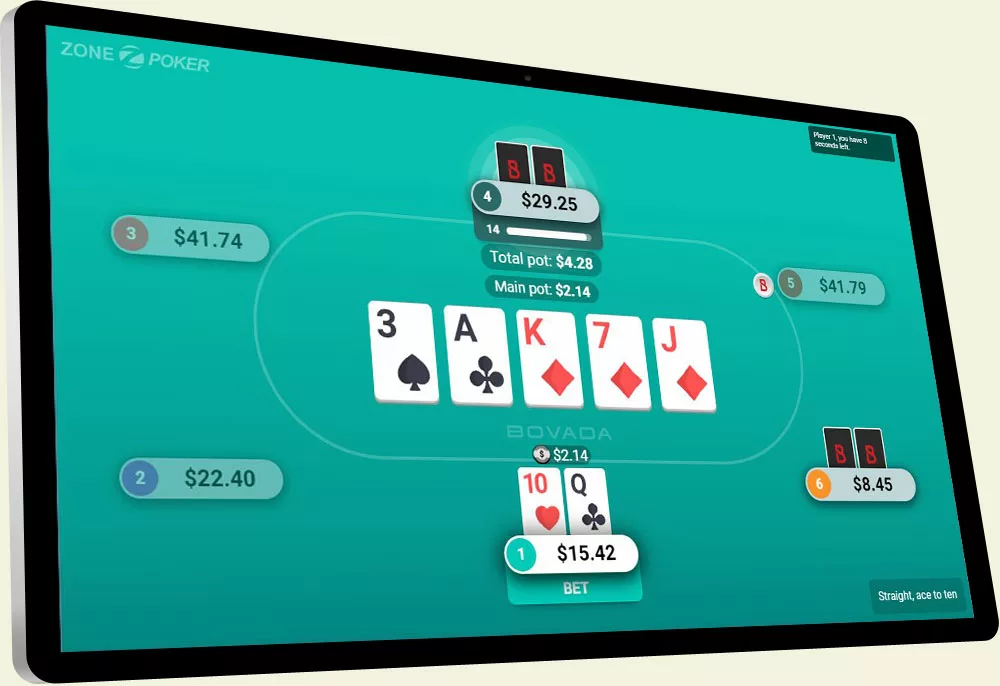
In 6 players game what happens when all the player goes all in 1st round(same amount) …who is considered as top 2??
Hi anupa, thanks for your question. That’s an interesting and exceedingly rare situation that I can’t remember encountering myself. It would take either an entire table filled with maniacs, or a combination of hands where every one is powerful enough to make each player willing to go all in. Something like AA, AA, KK, KK, QQ, and QQ.
Anyway, in that situation, the winners would be determined by how the hand played out. The winner after the river is dealt would come in 1st. If they had the same hand (like pocket Aces) and neither hit a flush, then they would split the pot, the other four players would be eliminated, and they would continue playing to determine 1st and 2nd places.
If there were no ties on the result and a second place needed to be determined after that one hand, the other 5 players would likely tie for 2nd place and the prize money divided accordingly.
Your sit-n-go strategy should help. My game has slipped a bit lately. Do you offer any other sit-n-go courses or classes?
I have been playing 9 player sit n goes for many years. I discovered most of your tips thru trial and error and consistently finish in the ‘money’ I couldn’t agree more with your game theory. Good refresher. Thank you :)
Just tried it, first sit&go was a total success.
thank you very much :)
Awesome news, Nik! Thanks for letting me know. Congrats on the win!
Dude! I have been killing it since I found your site, and especially using the Sit-ANd-Go guide for my first foray into those types of games. Well done! Thank you!
Thanks so much, DG. I really appreciate that.
Great strategy! Everything makes perfect sense.
Appreciate it, Jonathan!